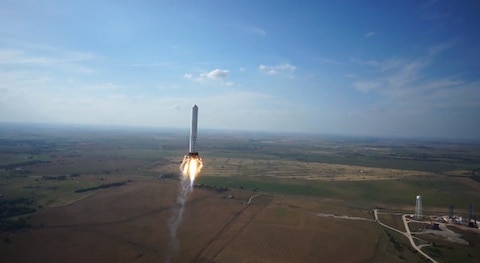Over the past year, we've been keeping tabs on Elon Musk's SpaceX Grasshopper rocket, which can take off and land vertically. The craft has now made its most impressive (and visually stunning) leap yet.
Watch the rocket's latest test, AFTER THE JUMP…
On June 14, SpaceX's Grasshopper flew 325 m (1066 feet)–higher than Manhattan's Chrysler Building–before smoothly landing back on the pad. For the first time in this test, Grasshopper made use of its full navigation sensor suite with the F9-R closed loop control flight algorithms to accomplish a precision landing. Most rockets are equipped with sensors to determine position, but these sensors are generally not accurate enough to accomplish the type of precision landing necessary with Grasshopper.
Previous Grasshopper tests relied on the other rocket sensors but for this test, an additional, higher accuracy sensor was in the control loop. In other words, SpaceX was directly controlling the vehicle based on new sensor readings, adding a new level of accuracy in sensing the distance between Grasshopper and the ground, enabling a more precise landing.
Grasshopper is a 10-story Vertical Takeoff Vertical Landing (VTVL) vehicle designed to test the technologies needed to return a rocket back to Earth intact.






